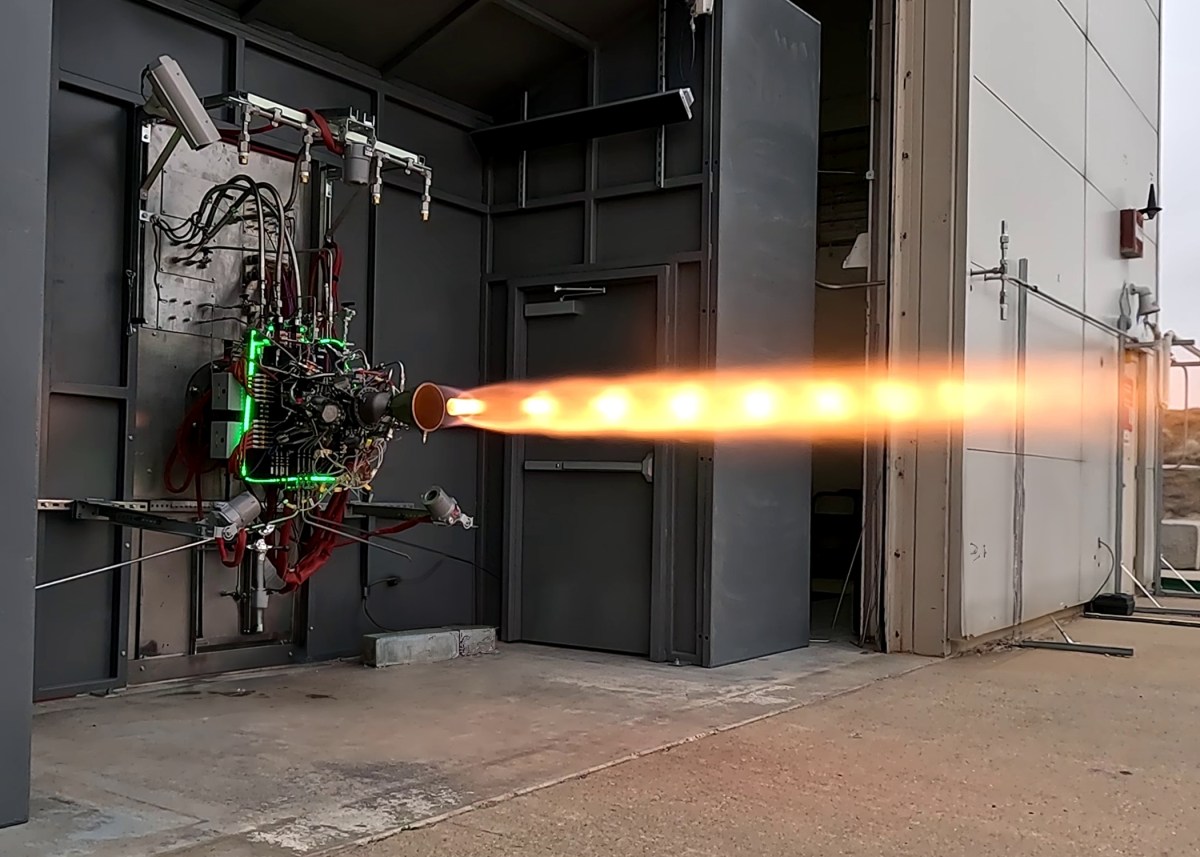WASHINGTON — Rocket propulsion startup Ursa Major announced it successfully completed ground tests of a new liquid engine being developed with U.S. Air Force funding.
The hot-fire tests of the Draper engine, performed at the company’s facilities in Berthoud, Colorado, validated the basic design, founder and chief executive officer Joe Laurienti told reporters. The 4,000-pound-thrust closed catalyst cycle engine was ignited more than 50 times in March, with each firing lasting several seconds.
A hot fire is just one step in the development process and many more tests will need to be performed with multiple engines before Draper is ready for flight. “We expect qualification next year,” Laurienti said.
The company built a Draper-specific test stand with funding from the Air Force Research Laboratory under a contract awarded last year.
Fuel selected for easier storage
The Draper engine uses a non-cryogenic kerosene peroxide fuel combination that offers a simpler storage solution compared to engines using liquid oxygen. Non-cryogenic fuels stay liquid at room temperature and could be useful for some in-space propulsion applications like lunar landers where the propellants need to be stored for extended periods of time.
“Draper combines the storable attributes of a solid rocket motor with active throttle control and throttle range of a liquid engine, providing the maneuverability and flexibility that is needed for hypersonic defense,” Laurienti said.
“For things like responsive hypersonics interceptors, you need the ability to fly on a moment’s notice. So our propellant choice was intended to do that while preserving performance,” he said.
The closed cycle architecture means the kerosene can be shut off completely and the engine can run either with just hydrogen peroxide decomposed, or with peroxide and kerosene, he explained. “Draper can throttle down below 10% max power which is really nice for applications like terminal phase on hypersonics or landing on a non-terrestrial surface.”
Another Ursa Major product — the 5,000-pound-thrust liquid oxygen and kerosene Hadley engine — flew for the first time in March powering a Stratolaunch hypersonic test vehicle.
Laurienti said Draper is aimed at customers looking to develop test targets that simulate hypersonic threats. The engine also will be offered for space applications such as orbital transfer vehicles requiring high impulse maneuvers or orbital insertions into cislunar space.
Ursa Major is in discussions with potential partners for test flights of the Draper engine in 2026, he said.
